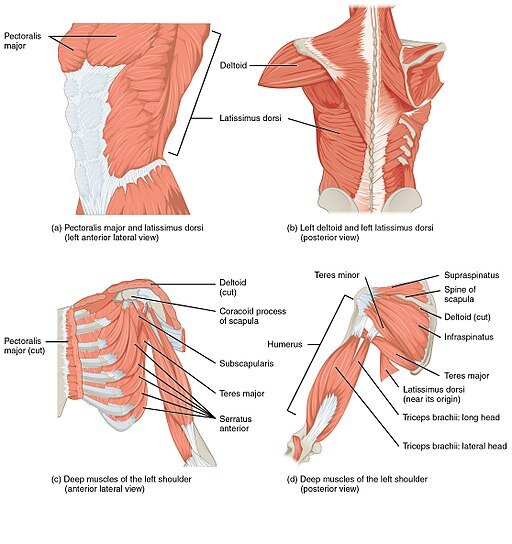Acupuncture for Shoulder Pain
Acupuncture Helps Chronic & Acute Shoulder Pain
Shoulder pain can be caused by an acute injury or a chronic condition like frozen shoulder, arthritis, fibromyalgia, or rotator cuff tendinitis. It is a common reason people seek acupuncture treatments.
Acupuncture helps relieve pain, reduce inflammation, release tight muscles, and increase range of motion for a variety of shoulder problems. Other modalities like electroacupuncture, cupping, gua sha, moxibustion, heat lamp therapy, and herbal liniments are often used in conjunction with acupuncture for shoulder pain.
Study: Acupuncture Relieves Shoulder Pain, Ups Range of Motion https://www.healthcmi.com/Acupuncture-Continuing-Education-News/1562-acupuncture-relieves-shoulder-pain-ups-range-of-motion
Trigger Points for Shoulder Pain
Many cases of shoulder pain are a result of tight muscles that form pain patterns. These are called trigger points and can be resolved by releasing the tight band of muscle causing the pain with an acupuncture needle. Below is a list of the trigger points that are usually involved in different types of shoulder pain.
Anterior shoulder pain:
Infraspinatus, deltoid, scalene, supraspinatus, pectoralis major/minor, biceps brachii, coracobrachialis, latissimus dorsi
Posterior shoulder pain:
Deltoid, levator scapulae, scalene, supraspinatus, teres major/minor, subscapularis, serratus posterior superior, latissimus dorsi, triceps, trapezius, iliocostalis
Shoulder Muscles: Image via OpenStax College / Wikipedia Commons. https://commons.wikimedia.org/wiki/File:1119_Muscles_that_Move_the_Humerus.jpg
Shoulder Anatomy
The shoulder joint is very complex since it is a ball and socket joint. It is made up of two joints. The first is formed by the humerus and the scapula which connects at the socket or glenoid cavity. This is called the glenohumeral joint. The second is formed by the acromion (the tip of the scapula) and the clavicle and makes up the acromioclavicular or “AC” joint. There are numerous muscles, tendons, and ligaments that help stabilize the shoulder. It is important to assess the entire shoulder joint to look for any structural or muscular imbalances that may contributing to the shoulder pain.
Source: https://upload.wikimedia.org/wikipedia/commons/f/fc/Shoulder_joint.svg National Institute Of Arthritis And Musculoskeletal And Skin Diseases (NIAMS); SVG version by Angelito7 [Public domain]
Source: https://upload.wikimedia.org/wikipedia/commons/6/67/914_Shoulder_Joint.jpg OpenStax College [CC BY 3.0 (https://creativecommons.org/licenses/by/3.0)]
More Information
For more information or to schedule a free phone consultation please contact me below.

![Source: https://upload.wikimedia.org/wikipedia/commons/f/fc/Shoulder_joint.svg National Institute Of Arthritis And Musculoskeletal And Skin Diseases (NIAMS); SVG version by Angelito7 [Public domain]](https://images.squarespace-cdn.com/content/v1/60c12e7694bedc06ee36c972/1625078216213-UG2376TY4B5ML5B09HDM/391px-Shoulder_joint.svg.png)
![Source: https://upload.wikimedia.org/wikipedia/commons/6/67/914_Shoulder_Joint.jpg OpenStax College [CC BY 3.0 (https://creativecommons.org/licenses/by/3.0)]](https://images.squarespace-cdn.com/content/v1/60c12e7694bedc06ee36c972/1625078247681-YEG2M6NA4BSHAUGIMM82/914_Shoulder_Joint.jpg)